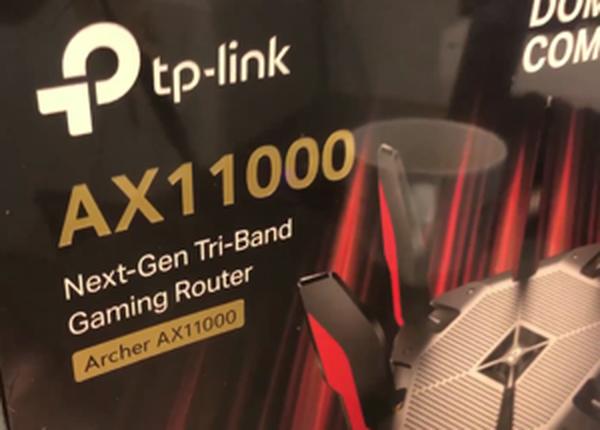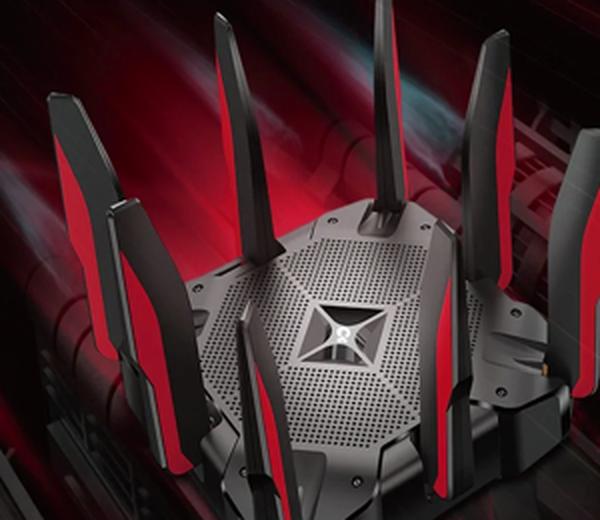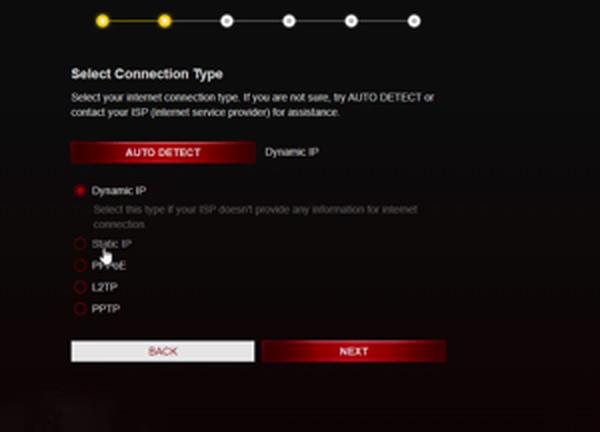
Trying out the TP-Link Archer AX11000 Tri-Band Wi-Fi 6 Router (2024)
My thoughts on the TP-Link Archer AX11000: connectivity, gaming performance, stability solutions, and customer service.
Introduction
I recently upgraded my home network with the TP-Link Archer AX11000 router. This piece of equipment is well reviewed for its high-speed capabilities, and I put it to the test with my everyday internet needs. From supporting multiple devices to gaming and even dealing with customer service, I've had a mix of experiences.
Some photos (click to enlarge)




Specs of the TP-Link Archer AX11000 Wi-Fi 6 Router
- Release Year
- Brand
- Compatible Devices
- Connectivity Technology
- Frequency
- Frequency Band Class
- Item Weight
- Special Feature
Prices
Robust Connectivity and Speed

The TP-Link Archer AX11000 is a powerhouse when it comes to delivering robust connectivity and lightning-fast speeds, but it's not without its shortcomings. As someone who has upgraded from previous routers, the difference in performance is night and day.
Here's a quick rundown of what stands out:
Speed: With Wi-Fi 6 capabilities, my devices now enjoy blistering internet speeds, both for downloads and uploads, vastly outperforming older models.
Range: Signal strength remains strong throughout my home, reaching areas that previously had weak or inconsistent reception.
Connectivity Options: The plethora of ports, including eight Gigabit LAN and multiple USB options, is a godsend for wired connections and network-attached storage devices.
Antennas: The eight external antennas may look a bit over the top, but they contribute to the router's excellent range and signal strength.
The AX11000 has shown itself to be highly capable in handling a multitude of devices - from gaming consoles and streaming devices to smart home gadgets - all without a perceptible decrease in performance. The tri-band frequency setup ensures that network congestion is a thing of the past, allocating devices to the most appropriate band for optimal performance.
On the flip side, it's not all perfect. I've experienced some quirks with the automated speed tests, which can influence the router's QoS settings and subsequently impact speeds. Avoiding the app-based speed test and manually adjusting the QoS to the actual speeds provided by my ISP resolved this issue. Additionally, I've noted that the router can run quite hot, which may necessitate additional cooling measures to maintain optimum functionality.
While there's some nuance to getting the best performance out of this router, such as understanding the importance of firmware updates and potentially having to manage overheating, the benefits outweigh the drawbacks. The AX11000’s capacity to deliver high-bandwidth connections across a range of devices has made it an essential component of my home network.
One of the more practical benefits is the ease of setup and management. The router's interface is clear and user-friendly, which is crucial for those who may not be network experts. While there could be a steep learning curve for novices, the Tether app and the browser-based setup offer a dual approach to managing the network as per individual needs and preferences.
In summary, this router has been a significant upgrade in terms of network performance. Reliable connectivity, high speeds, and capacity to handle numerous devices make the AX11000 a solid choice, provided one is willing to work around its minor limitations.
Gaming and QoS Performance

When it comes to gaming and Quality of Service (QoS) performance, my experiences with the TP-Link Archer AX11000 have been significant. As someone who takes online gaming seriously, the importance of a smooth and uninterrupted internet connection can't be overstated. Here are the key aspects that have stood out to me:
Game Accelerator: This feature automatically optimizes traffic for gaming, which I found keeps latency low. It's a handy tool for when every millisecond counts in competitive environments.
QoS Settings: By manually setting the total bandwidth available, the router prioritizes traffic based on my usage. This means that I can allocate more bandwidth to my gaming PC, ensuring it gets the lion's share of my internet speed during intense multiplayer matches.
Tri-Band Advantage: Having distinct bands to segregate traffic is beneficial. I place my gaming devices on one 5GHz band for optimal performance, while the rest of my smart home devices connect to the other 2.4GHz and 5GHz bands.
However, it's not without drawbacks. I've noticed that if the router's built-in speed test shows a lower speed than what I'm actually getting, it can throttle the connection, affecting performance. By avoiding this test and setting bandwidth limits manually, I've circumvented this issue.
From a personal standpoint, these features collectively streamline my gaming sessions, ensuring that I'm not taken out of the action due to internet hiccups. It's this level of control and prioritization that makes the Archer AX11000 a suitable pick for gamers. But it's imperative to note that not all games or scenarios may benefit equally; the router's performance can hinge on factors like game server latency or how many devices are connected simultaneously.
In summary, my router has played a pivotal role in defining my online gaming experiences because:
It provides a dedicated gaming bandwidth.
Manually adjustable QoS settings let me tailor my network priorities.
Tri-band capabilities offer a versatile setup for a multi-device household.
However, it's critical to acknowledge potential speed throttling based on router's test results, which can be a hindrance but is manageable with manual intervention.
Cooling and Stability Solutions

In my experience, the TP-Link Archer AX11000 has been a solid router with impressive performance capabilities. However, I couldn't ignore the overheating issue that seemed to plague its functionality over time. I took matters into my own hands to devise cooling solutions that would help maintain stability and prolong the router's life. Here's what I've learned and done:
Active Cooling: I placed a laptop cooler beneath the router to aid in dissipating the heat. It helped marginally, but it wasn't a catch-all solution.
Additional Fans: When the laptop cooler wasn't enough, I added two 120mm fans for an extra push-pull effect which made a significant difference. The router now operates at a much cooler temperature.
Regular Reboots: I also programmed the router to reboot daily, which seems to clear any lingering issues and keep it running smoothly.
Despite its robust features and strong signal reach, it's clear that managing the router's temperature is key to ensuring peak performance. I was somewhat disappointed that such a high-end device required additional intervention on my part to stay cool, but the improvements were immediate and impactful once I implemented these changes.
A quick reminder for those setting up their AX11000: bypass the built-in speed test in router settings and manually adjust your QoS settings to match your known ISP speeds. This ensures you're not unnecessarily throttling your connection based on inaccurate speed test results the router might produce.
While these extra steps might be a minor inconvenience, the payoff has been a stable and fast internet connection. It's a trade-off I'm willing to accept for the time being. The router, with its myriad of features and exceptional range, brings tangible improvements to my home network, making the added cooling setup seem like a small price to pay.
In essence, the TP-Link Archer AX11000 has proven to be both powerful and sensitive - a bit of tender love and care in the form of cooling fixes its shortcomings and unlocks its full potential. Despite the hiccup with managing its temperature, I’d still say it stands out as a premium choice, especially for those ready to take an active role in its maintenance.
Customer Service Experience

When it comes to assessing my experience with TP-Link's customer service while navigating issues with the Archer AX11000 router, the narrative is a mix of highs and lows. The customer service experience is a crucial element in the overall satisfaction with any tech product, and the TP-Link Archer AX11000 is no exception.
Here are some key points from my interaction with TP-Link's support:
The availability of support was adequate, with options to contact them via phone or email.
Response times varied; there were instances of fast replies but also times when follow-ups were necessary to get a response.
While the service was generally helpful, replacement procedures and troubleshooting could feel cumbersome.
Technical competence of the support staff was generally high, with most issues being resolved accurately.
Warranty service was honored, but the process was lengthy and could be inconvenient for customers relying on consistent internet access.
I was initially pleased with the politesse and professionalism of the support staff. They seemed eager to assist and provided clear instructions for troubleshooting. However, I did encounter moments of frustration. For example, when the router began to underperform, requiring a replacement. The process was slow and communication gaps made the experience less than ideal.
The fact that TP-Link honors a 2-year warranty is noteworthy and demonstrates their commitment to customer satisfaction. This provides a safety net that is much appreciated. However, the replacement I received was refurbished, which, while functional, does leave one introspecting about the longevity and durability of the product.
One marked positive was the ease of contacting 24/7 Tech Support, which is an indispensable feature for urgent assistance. Furthermore, the lifetime subscription to TP-Link HomeCare provides peace of mind, knowing that your network and connected devices have a robust layer of security.
Overall, while TP-Link's customer service has room for improvement, particularly in the area of responsiveness and replacement logistics, the staff's expertise and the company's warranty policy tilt the scales towards a positive experience. It's reassuring to know that help is available, though I hope for increased efficiency and smoother processes in the future. Having direct access to quality tech support and comprehensive warranty coverage can truly enhance the user experience and trust in a product, making it easier to overlook some of the hiccups along the way.
Comments (0)
Share